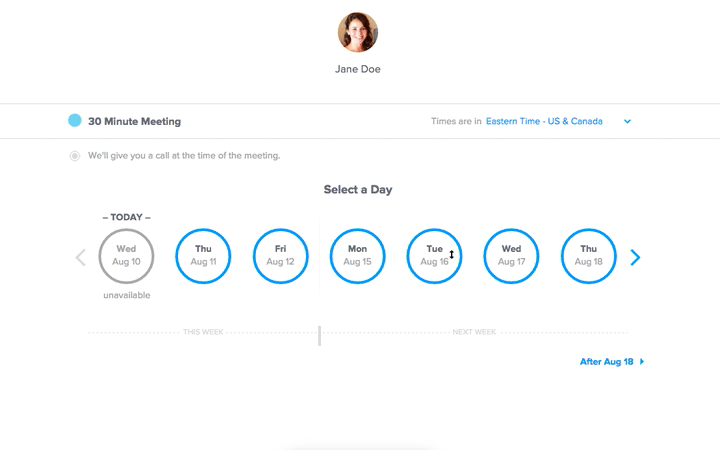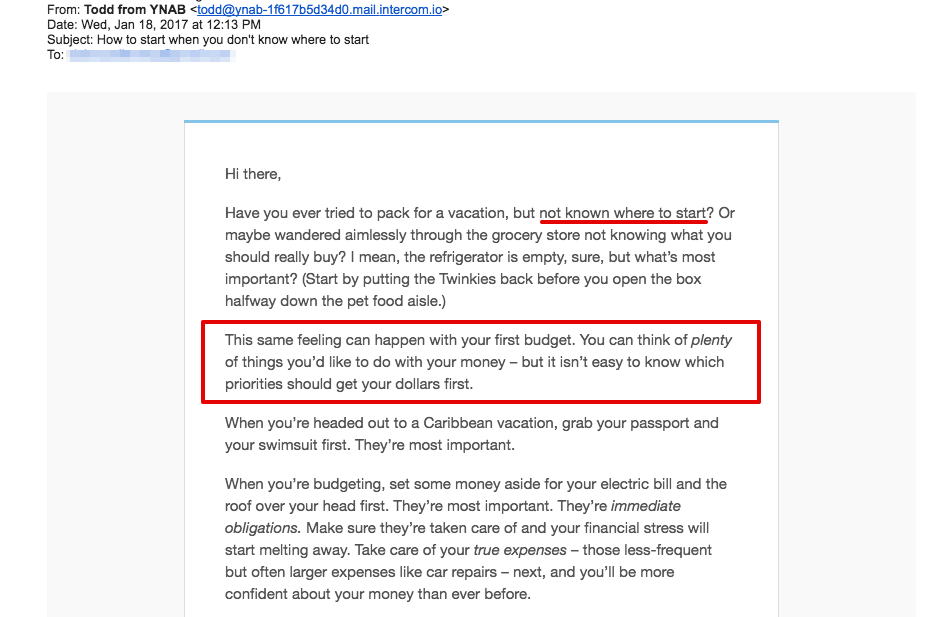Picture this: it’s your first time in a new city. You flew in last night for a conference, and this morning, you need to grab coffee on the way to the convention center.
You find a nearby cafe on Yelp with great ratings, so you make the walk over from your hotel. But when you arrive, the cafe isn’t quite what you expect.
The counter is surprisingly difficult to find — way in the back, behind a maze of tables and chairs you have to weave through. When you finally get back there, you glance around for the menu board…but there are none on display. Confused, you ask the staff behind the counter (who’ve barely acknowledged your presence) for a menu…and you’re handed a water-stained paper list of the baked goods available.
In a hurry and getting frustrated, you explain that you didn’t need a food menu, you just need some coffee. “Oh, we don’t have a coffee menu,” says one of the baristas, “But our drinks are…” and he rattles off a long list of hip-sounding names — none of which describe what the drinks actually are (black coffee? Iced latte? Cappuccino?)
You don’t have time to figure this out — so, coffee-less, you thank the barista and leave. You’ll have to find another cafe, or head straight to the convention center sans caffeine.
Good Marketing Can’t Save Poor Activation
If you’ve ever been in a scenario like the one above, just reading that story probably made you cringe. And it should — because SaaS users endure this painful experience every day.
And they could be your users.
You may have the healthiest marketing budget in the world and the stickiest, most relatable content attracting new users. But funneling those users into a sub-par onboarding flow is a recipe for dismal activation rates — creating minimal trial-to-paid conversions.
In other words, 50 glowing Yelp reviews can get people in your door, but a frustrating in-store experience will have them walking right back out again.
Why SaaS Teams Struggle With New User Activation
Smart founders and marketers already know activation is crucial to the customer journey — like Ty Magnin, Director of Marketing at Appcues, who writes that activation is 74% more impactful than the other “pirate” metrics.
So why do teams struggle to boost their new user activation rates? Two common reasons:
Activation challenge #1: seeing the “what,” but not the “why”
While it’s common knowledge that you should track user activity during onboarding, knowing what users are doing in your app is only half the picture.
Not many analytics platforms reveal the why’s prompting users to take (or not take) certain actions — why are they setting up this part of their profile, but not another? Why did they actually sign up in the first place?
Without knowing those why’s, it’s difficult to know what “Aha!” moment will keep users’ attention.
Activation challenge #2: misunderstanding of users’ true use cases
You may know one or two key ways folks are using your product — but can you confidently list the top four? The top six?
When I ran marketing at Calendly, we knew our best customers used our product for a variety of use cases: to acquire new customers, to manage relationships with existing clients, to interview and hire great candidates, etc.
However, it wasn’t until we personally interviewed 5-10 power users from each segment that we uncovered the many unique needs within those use cases.
For example, we knew that sales people (our main “customer acquisition” users) were sharing Calendly links with prospects in 1:1 emails. But we discovered that marketing professionals were also using the product — they were building it into their automation systems to more efficiently route inbound leads to sales reps.
Through our interviews, we understood, on a more nuanced level, the various ways our segments defined “success.” Had we not held these conversations, we would have continued making blanket assumptions about our key use cases — and provided a blanket onboarding experience to match.
Both activation challenges above can be solved by getting “close to your customer” (Drift CEO David Cancel discusses this at length in his AMA).
But the bigger question is: how do we actually get close to our customers?
Get Close to Customers > Improve Activation With Jobs To Be Done
Jobs To Be Done (JTBD), originally a product development theory, has been gaining serious traction over the past few years in the marketing landscape. If you’re new to JTBD, the theory goes that people buy and use a product because they want to make their lives better in particular ways.
In other words, we “hire” products to do certain jobs that improve our lives. If a product does its job well, we keep hiring it over and over. If it doesn’t, we “fire” it and look for something else.
By understanding how your customers improve their lives with your product, you can work backwards to map out the key activation events new users must take to ensure your product does its “job” correctly and quickly — resulting in more customers “hiring” your product long-term.
While a full discussion of JTBD would require an entire book (I recommend this fantastic option by Alan Klement), you can get quite close to your customers with this basic understanding.
By continually asking your new and long-term customers these four JTBD questions, you’ll have all the data you need to identify the key activation points your users must hit, so you can build more effective onboarding experiences and convert more trial users into long-term customers.
The 4 JTBD Questions That Reveal Users’ Key Activation Events
Question 1: How would you describe your job title + role at work?
Users who should answer this question:
- Long-term paying customers
- Trial users
Why this question is so helpful:
- When asked to long-term customers, this question can reveal which types of people most often get value from your product long-term (i.e., the people you most want to market to and build for).
- When asked to new users, this question reveals whether any new segments of people are being attracted to your product as it evolves over time.
Where to ask it:
- Long-term users: survey or customer interview
- Trial users: in-app poll or chat message
Question 2: What was happening in your world that led you to sign up for [PRODUCT]?
Users who should answer this question:
- Long-term customers
- Brand new paying customers
Why this question is so important:
- This question reveals the struggles your customers are enduring (the “jobs” they need done) that motivate them to seek you out.
Where to ask it:
- Long-term users: customer interview. You really need some time to let customers dig into the details, and this is hard to do in a survey.
- Brand new customers: on the payment confirmation page. This is when they’re most engaged, and they’re feeling most confident that your product solves their struggle.
This is one of the questions Joanna Wiebe of Copyhackers asked Crazy Egg’s customers when she optimized the Crazy Egg homepage. The result? A 13% lift in conversions.
Just as Joanna used customer responses to craft powerful homepage copy, you can use these responses to create more effective onboarding. Break your onboarding flow into segments around the most common “jobs,” rather than pushing everyone into the same unsegmented flow.
Question 3: What happened during your trial that convinced you [PRODUCT] was the right solution?
Users who should answer this question:
- Long-term paying users
- Brand new paying customers
Why this question is so important:
- This question reveals the “Aha!” moment at which the user realized your product could successfully do the job. The more users you can drive to this moment, the higher your conversion from trial > paid. Once you’ve identified the “Aha!” moment, you can map out the activation events a user must reach to arrive at “Aha!”
Where to ask it:
- Long-term users: customer interview. You really need some time to let customers dig into the details, and this is hard to do in a survey.
Brand new customers: on the payment confirmation page, or in a survey shortly after signup. This is when they’re most engaged, and they’re feeling most confident that your product solves their struggle.
As I interviewed power users at Calendly, a pattern emerged: the faster a trial user shared their Calendly link and booked a meeting with someone, the more likely they were to become a long-term user. For our ideal customer, the “Aha!” moment was the experience of receiving a new meeting in her calendar almost magically, without any email tag involved.
This helped us create an onboarding experience and content series that helped users get their first meeting more quickly.
Question 4: What were you skeptical or anxious about when you signed up, that would have prevented you from using [PRODUCT] long-term?
Users who should answer this question:
- Long-term paying customers
- Brand new paying customers
Why this question is so important:
- This question uncovers the roadblocks to activation (e.g, the opposite of the “Aha!” moment). When you know what users are worried about during their trial, you can write emails or in-app copy that acknowledges and dispels those worries, reducing the likelihood of abandonment.
Where to ask it:
- Long-term users: survey or customer interview
- Brand new customers: survey or customer interview
The team behind budgeting software You Need a Budget knows their 34-day trial period is fraught with roadblocks — many stemming from a user’s personal (often unhealthy) relationship with money. To combat this, they send a series of friendly emails to people in the trial phase, each designed to help the user overcome one common anxiety in the way of activation:
Bringing it All Together
If you’re regularly collecting input from your customers, you’ll know whether your “Yelp reviews” are funneling folks into a pleasant “coffee shop” experience, or whether your onboarding process is leaking ideal users.
Start with these four JTBD questions:
- How would you describe your job title + role at work?
- What was happening in your world that led you to sign up for [PRODUCT]?
- What happened during your trial that convinced you [PRODUCT] was the right solution?
- What were you skeptical or anxious about when you signed up, that would have prevented you from using [PRODUCT] long-term?
Have you asked your customers similar (or different) questions recently? What did you learn from them? How did it change the way you think about your product, your positioning, or your customers’ use cases? Share your experiences in the comments below.
About the Author: Claire Suellentrop is the author of Websites that Convert, a one-sitting read that helps SaaS founders create compelling website content + copy. Get the first chapter free. Claire helps smart, friendly SaaS companies like Calendly, FullStory and Wistia get inside their customers’ heads. Then, she turns those user insights into high-converting marketing experiences — including landing pages, email sequences and onboarding flows.
from The Kissmetrics Marketing Blog https://blog.kissmetrics.com/uncover-customers-key-activation-events/



No comments:
Post a Comment